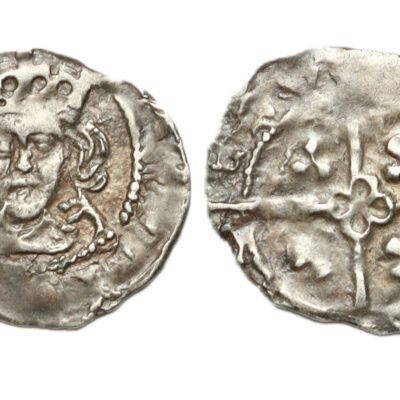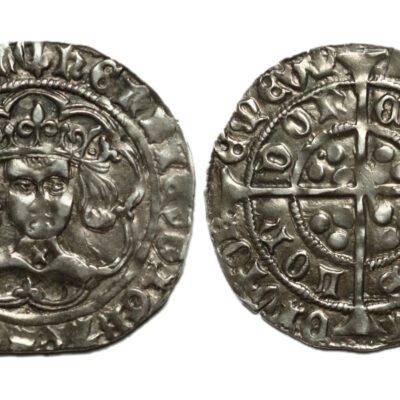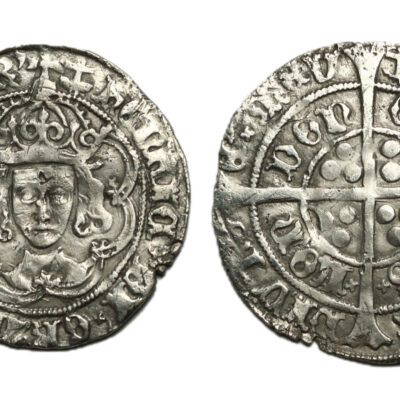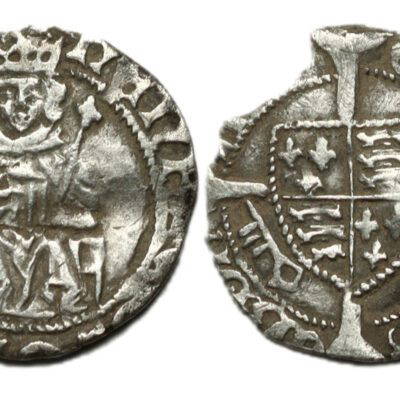Hammered Coins
Hammered coins were produced by hand, no machines were used during this period, lasting until 1662 when machine made coins were produced. Hammered coins were made by placing a blank piece of metal usually silver (early period of coinage) and then later gold. The correct weight of metal was used between two dies, and then striking the upper die with a hammer to produce the required image on both sides.
The bottom die (sometimes called the anvil die) was usually counter sunk in a log or other sturdy surface and was called a pile. One of the minters held the die for the other side (called the trussel), in his hand while it was struck either by himself or an assistant. Sometimes double striking or ghosting can be seen on a coin as they would jump within the two dies, remember this is done by hand.
In the later period of hammered coins, in order to increase the production of coins, they were sometimes produced from strips of metal. Coins were cut out saving times.
Please see coins currently available on this site. If you are looking for anything in particular, please let me know. Should you have any coins in this category that you would like to sell, then please let me know.
Showing all 5 results





